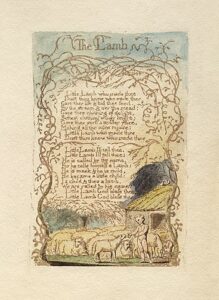
John Tavener was one of the most intriguing, unconventional, and prolific composers in British music, but it’s fair to say that at least for Americans he’s known for only a couple of pieces, notably “The Lamb” and “Song for Athene.” When my own choir sang that first piece I was woefully ignorant about Tavener, thinking that he was some sort of musical flash in the pan. After all, he’d said, “‘The Lamb’ came to me fully grown and was written in an afternoon and dedicated to my nephew Simon for his 3rd birthday.” Doesn’t that quotation make him sound like someone who just jots down musical compositions as the inspiration strikes him, without taking too much thought?
In reality, this picture of John Tavener as a dilettante is very misleading. As I’ve read about the composer’s work and life (he died in 2013 at the age of 69), it’s become very clear that he worked extremely hard on his compositions and took his work very seriously. He also took his religious faith seriously, converting to the Eastern Orthodox Church in 1977. But don’t think that he was some kind of stern and forbidding sourpuss! He also loved fast cars and had a famous collection of them. He seems to have been one of those rare people who just plunges into life in all sorts of ways. This zesty approach is all the more fascinating when you realize that he suffered from serious health issues for most of his adult life, having had a serious stroke in his thirties as well as several heart attacks and cancer. This panoply of disorders probably stemmed at least partially from the fact that he had a condition called “Marfan’s syndrome,” a genetic disease that attacks the heart and usually leads to abnormal height. Tavener was 6 feet 6 inches tall; most medical historians believe that Abraham Lincoln suffered from the same disease. But Tavener (like Lincoln) didn’t let his suffering dampen his humor: “He told a reporter from London’s Guardian newspaper that doctors couldn’t pinpoint a cause of some of the pain he was enduring. ‘All they ever say is, “You’re lucky to be here at all!’” Tavener said, ‘which is charming.’” But he also saw the spiritual side: “Suffering is a kind of ecstasy, in a way. . . . Having pain all the time makes me terribly, terribly grateful for every moment I’ve got.” (both quotations from “In Memoriam of a Genius”)

